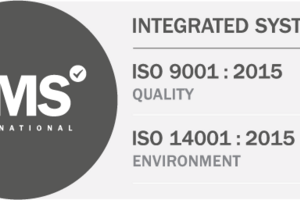09 August 2016
The Greenlite analysis; why the changing room is among the most crucial 'get right' elements in retail lighting
The simple question; ‘How to light a changing room?' belies a complex, vitally important issue for the high street.
A bad changing room experience can make or break how customers feel about a particular store. Self-confidence and happiness are ultimately affected by these issues, to say nothing of the purchasing imperative.
Also, with the ongoing rise of online, people can try on in the comfort of their homes. This is a powerful reason for high street retailers to up their lighting game.
It all means understanding the issues involved in changing room lighting, and the solutions and pitfalls out there is key to successful retail.
Store changing room lighting; the essentials
Illustrating the extent to which lighting varies, this blog features 20, radically different images of the same shopper. The problem is clear. Some lights over flatter; encouraging purchases that won't stand up to real world lighting.
Others make shoppers look and feel unpleasant, using dazzling lights that highlight imperfections invisible under normal conditions.
What is required is natural looking light, that helps shoppers see and assess clothing positively, without adversely prejudicing their opinions either way.
The colour of retail
It is vital to avoid light which makes colours and skin tones look unnatural or washed out. For these reasons, accurate colour rendering index (CRI) is key. CRI measures how well a light shows up an object’s true colour, and is an area where LED technologies excel. As well as being an excellent energy efficient store lighting solution, today’s LEDs can be as vibrant as daylight; precisely matching the real world in which we wear the clothes we buy.
Additionally, colour temperature is crucial. This refers to the sense of warmth or cool that light can impart. 'Warmer' light hearkens to summer evenings; contrastingly 'cooler' light evokes a sense of winter in customers.
A moment's thought reveals why this is key in retail. Want to sell the summer collection? Use a warm light early in the year to help customers look forward to hotter days. And while cooler light is considered less flattering on skin tones, it may help to evoke a seasonal atmosphere when selling the winter collection.
LEDs can be dimmed, and used to set different lighting scenes, all of which can alter colour and warmth according to need. But don't overdo it. Natural remains the watchword.
It is also worth recognising that overhead lighting can cause unflattering shadows. Think carefully about where you place your overhead lighting, so that it’s not directly over where the customer usually stands, or consider vertical lighting on either side of the mirror: this can help to create even, diffused illumination.
Watch out for the false start
Here's an important truism to consider when specifying store lighting solutions. Light that is very flattering may result in a purchase, but if it’s not ‘true’ then people will return the item once they try it on at home.
The best sales aren't those which are forced, or misleading. In just the same way labelling must be true, so lighting mustn't seek to mislead or overstate quality.
Uplighting, downlighting, and altering the angles of wall-mounted mirrors are little tricks that deliver perceptual changes and can win sales.
But goods bought in these circumstances just end up coming back. Worse, in the longer term they breed mistrust among customers, who can't fathom why products never live up to changing room expectations.
Light that's as natural as possible, which gives customers a true sense of themselves and the product they are buying is needed.
And, if you can afford it, why not offer different lighting settings within the changing room? 2 or 3 different scene options will let customers see their clothes in all options. Again, LEDs, with dimmable and scene controls are perfect in this scenario; signpost the switches clearly and give customers the light they demand.



